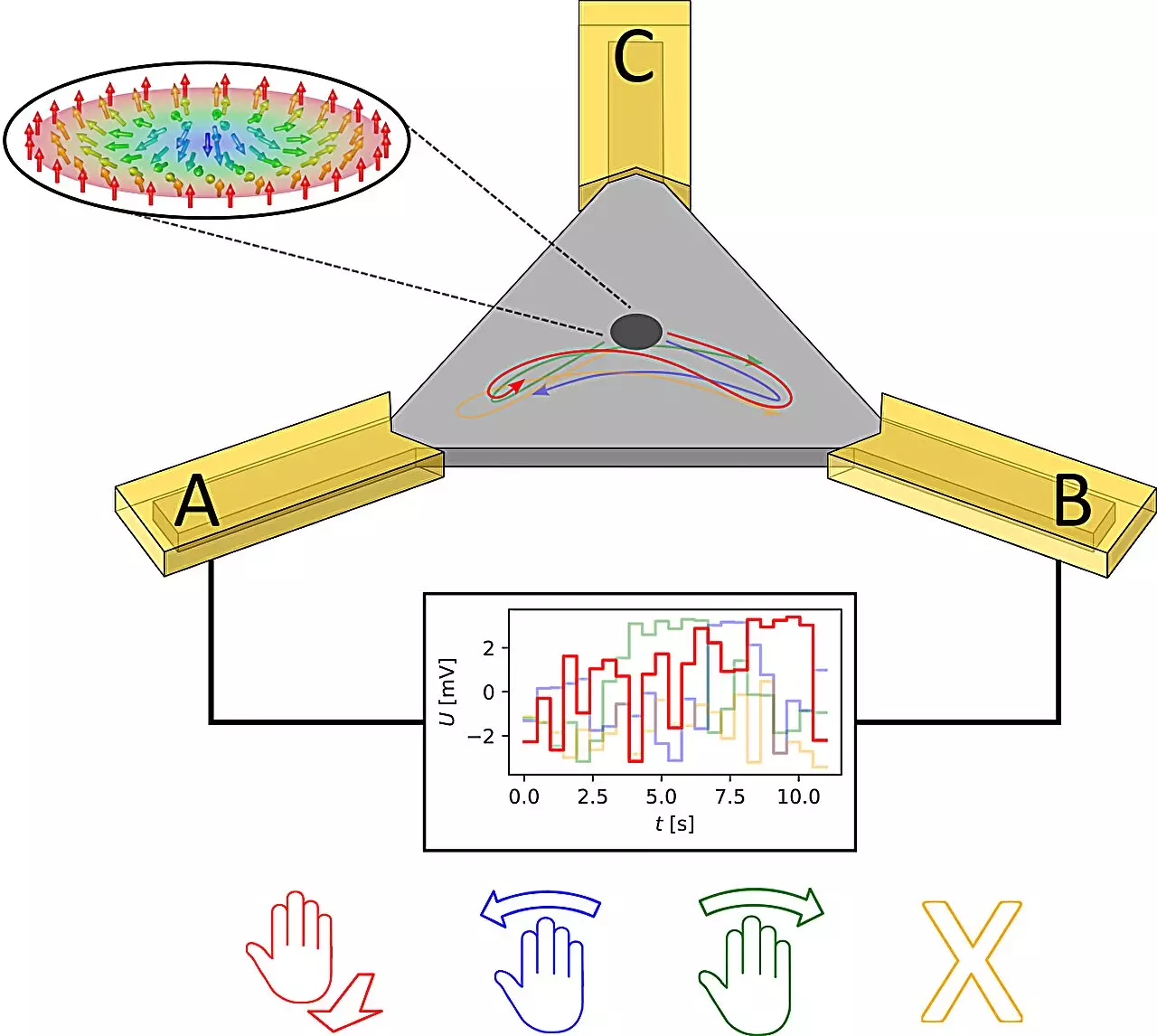In recent advances in computing technology, a research team at Johannes Gutenberg University Mainz (JGU) has made significant strides in enhancing gesture recognition systems. By utilizing a novel approach known as Brownian reservoir computing, the researchers have devised a mechanism capable of interpreting hand gestures with impressive accuracy and energy efficiency. This groundbreaking work, which includes the application of skyrmions, a newly recognized element in the field of computing, not only provides a framework for gesture recognition but also sets the stage for innovative developments in sensor technology and non-conventional computing devices.
At the core of this innovative approach is the use of skyrmions—tiny, chiral magnetic whirls that exhibit unique behaviors in the magnetic landscape. The research team, led by Professor Mathias Kläui and prominent member Grischa Beneke, has identified that these skyrmions can serve as effective carriers of information within a computing system. Leveraging skyrmions allows the researchers to detect movements generated from hand gestures, such as a simple swipe, transforming them into usable data. This conversion offers a new dimension to gesture recognition systems, potentially allowing for more intuitive interactions with technology.
The methodology employed in this research harnesses Range-Doppler radar technology alongside advanced reservoir computing techniques. The radar sensors decode the dynamics of simple hand gestures, capturing movements with remarkable precision. This data is then translated into voltage signals that feed into a specially designed reservoir comprised of multi-layered thin films configured into a triangular shape. The skyrmions within this reservoir respond to the supplied voltage by moving in patterns that reflect the radar data, ultimately translating these movements back into gesture recognition.
For instance, when a user performs a left or right swipe, the radar system detects the changes and communicates this to the reservoir, which in turn processes the interpreter’s gestures as causal, dynamic effects. The researchers have highlighted that this method not only parallels contemporary software solutions, including artificial neural networks, but it does so with reduced energy consumption and without extensive training requirements. This simplicity offers a promising pathway for developing more efficient gesture recognition systems.
One of the most striking aspects of this study is its performance comparison with traditional neural network-based systems. The JGU researchers found that their Brownian reservoir computing approach yielded gesture recognition accuracies that were either equivalent to or exceeded those from standard software methods. This finding is particularly significant in light of growing concerns about the energy demands required by conventional neural networks, often requiring extensive training and computational resources. By minimizing energy consumption through the use of skyrmions, the JGU team’s work represents a paradigm shift toward more sustainable technology.
The research has broader implications beyond gesture recognition systems, pointing toward the potential for skyrmions to revolutionize data storage and computing architecture. Historically viewed primarily as components for data storage, the study positions skyrmions as essential players in a new wave of computing technologies. Their ability to move with minimal energy input aligns perfectly with the demands for more compact, efficient, and quicker computing solutions.
At the same time, researchers acknowledge that there is still room for enhancement. Current systems rely heavily on magneto-optical Kerr-effect (MOKE) microscopy for read-outs, but they suggest that switching to a magnetic tunnel junction could further miniaturize the apparatus and refine the reading accuracy. Ongoing experiments indicate that emulating the signals produced by magnetic tunnel junctions may unlock even greater abilities within the reservoir computing framework.
The advancements made at Johannes Gutenberg University Mainz represent a pivotal step in the merging of gesture recognition technology with breakthrough computing methodologies like Brownian reservoir computing. By harnessing the properties of skyrmions, the researchers have not only showcased a viable alternative to traditional computing systems, but they have also laid the groundwork for future explorations in non-conventional devices. As technologies evolve, the potential applications for this research could lead to revolutionary changes in the interface between human users and digital systems, reinforcing the need for sustainable solutions in computational science. With ongoing investigations and refinements on the horizon, the journey into this innovative frontier of computing is just beginning.


Leave a Reply